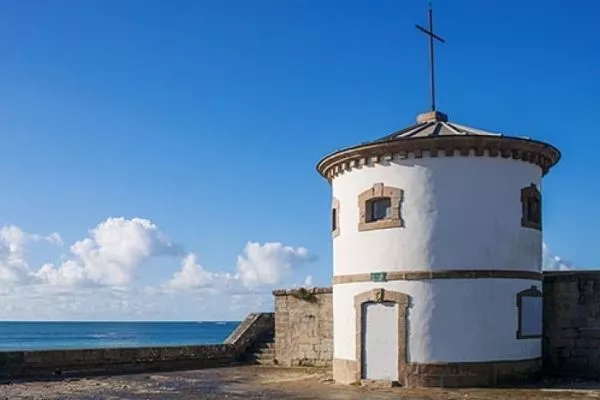Introduction to Fénoux Masts
The Fénoux mast is an innovative structure that enhances maritime navigation, especially at challenging port entrances along the Atlantic coast. This article delves into the design and operation of these noteworthy navigational aids, originally created to guide vessels safely to shore in adverse conditions.
The Origin of the Fénoux Mast
The invention of the Fénoux mast can be traced back to 1832, when Lieutenant Julien Hippolyte Fénoux, who was navigating the treacherous waters of the Goyen river, recognized the need for a better guiding system for ships faced with difficult approaches to the port of Audierne. He observed the challenges posed by shifting sandbanks, which made it nearly impossible for pilots to board vessels during inclement weather. Determined to find a solution, Fénoux constructed a mast-like structure that would provide visual signals to incoming ships.
The Semaphore Solution
Inspired by earlier telegraphic signaling methods, Fénoux’s innovation laid the groundwork for what would eventually become the semaphore system. His design featured an arm that could pivot to indicate the best course for approaching vessels, providing real-time navigational assistance. This significant advancement was officially acknowledged in 1839, when local authorities discussed the necessity of establishing masts like Fénoux’s to prevent shipwrecks along the perilous French coastline.
Training the Pilots
Operation of the Fénoux mast required trained personnel, known as pilots, who were responsible for interpreting the signals and directing incoming vessels safely. As the system was implemented in various locations, training programs were established at key sites, including Port-Louis and Saint-Nazaire, ensuring that skilled pilots could safeguard navigation in challenging environments.
How Fénoux Masts Operate
The structure of the Fénoux mast includes a large movable arm, shaped like an isosceles triangle, which rotates on a central axis to guide vessels. The mast’s arm indicates preferred navigation channels—whether to steer to the right or left. This ingenious system effectively helps ships navigate amidst obstacles, ensuring safer passage into ports.
The operation depends significantly on visibility and weather conditions, as pilots rely on clear lines of sight to relay accurate signals. An illustration from the 1840s captures the various signals that could be communicated, ranging from directions to avoid hazards to notifications of safe passage.
Historical Significance of Audierne’s Fénoux Mast
Audierne’s Fénoux mast was commissioned in 1843 and has since become a vital part of the local marine infrastructure. Its original location was strategically chosen for visibility before being relocated due to the obstructions caused by surrounding buildings. Today, it stands as the last remaining mast built according to Fénoux’s design and was declared a historical monument in 2022. Restorations and upgrades, including the installation of new viewing windows for optimal surveillance, continue to preserve this piece of maritime history.
The Relevance of Fénoux Masts in Modern Navigation
As maritime technology advances, the principles behind Fénoux masts remain relevant in the context of safe navigation. They exemplify the importance of visual signals in an increasingly automated world where electronic systems can fail. The masts serve not only as a navigational aid but also as a reminder of traditional seafaring and the importance of human oversight in maritime operations.
Wider Implications for Sailing and Boat Rentals
For those looking to experience sailing in regions enhanced by such navigational aids, understanding the importance of Fénoux masts contributes to a greater appreciation of both historical and modern maritime practices. GetBoat recognizes the crucial role that effective navigation plays in enhancing boating experiences. On our platform, clients can find a wide array of boats available for rent, whether for leisurely sails or adventurous explorations of unique coastal landscapes.
Következtetés
In summary, the Fénoux mast remains a crucial piece of maritime heritage that illustrates the evolution of navigation aids in the challenging conditions of the Atlantic coast. Experience of new locations through sailing is enriched by understanding the intricate relationship between local geography and navigational technology. With tools like the Fénoux mast, sailors and boaters can explore hidden bays and pristine coastlines while ensuring safe navigation.
If planning a seaside trip, consider renting a boat—each inlet, bay, and lagoon tells a story comparable to that of local cuisine, architecture, and culture. Choose to navigate your adventure with GetBoat.com for unforgettable experiences on the water.
The Bigger Picture: The Future of Maritime Navigation
The advancements represented by Fénoux masts suggest an ever-evolving approach to navigation, which impacts not only training for pilots but also the overall maritime tourism landscape. While now only a few Fénoux masts are operational, their legacy influences modern navigation strategies across the world. If you want to keep pace with these updates in sailing, make sure to book your next boating adventure with GetBoat, where freedom, energy, and choice await you!

 Unveiling the Functionality of Fénoux Masts">
Unveiling the Functionality of Fénoux Masts">
